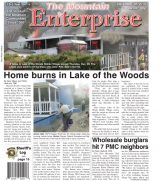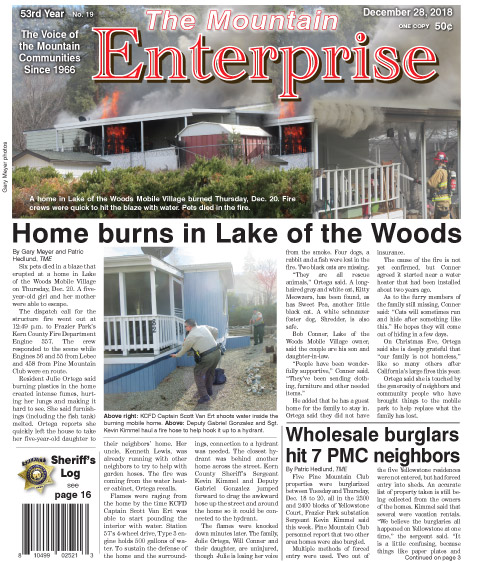By I. J. Christy, Ph.D.
— Christy is an astrophysicist on the faculty of the California Institute of Technology in Pasadena who has owned ranches in Lockwood Valley for three decades.
Last week, on December 7, The Mountain Enterprise published an article [“Cuddy Valley Project one step closer: Forest Service releases plan to remove 80% of Cuddy Valley trees with commercial logging and without full public review”].
This is a proposal by the Los Padres National Forest (LPNF) to log 80% of the healthy trees in the Cuddy Valley area “in order to help maintain a healthy forest.”
This is a terrible idea.
The Mountain Enterprise article also noted that, while the LPNF claimed to have completed the environmental review of this project, they have not produced the requested scientific data to show that their proposed project is justified.
We had a ringside seat to the devastating Station fire. It raced at breakneck speeds across a huge area, fed by grasses in the Angeles National Forest.
There are not many trees there. It is brushlands and grasslands that accelerate the speed of fires. Cutting down trees opens space for grass and brush.
It is well established that heavy logging encourages the dominance of flammable, invasive species of grasses and brush. Abandoned logging roads overgrown by vegetation can act as fire corridors.
In contrast, dense forests usually provide more shade, resulting in lower ambient temperatures and greater humidity. They are therefore less susceptible to wildfires. We are living in the time of global warming. We will have more droughts. Water is the new gold of California. Trees are importers of water.
We bought our Lockwood Valley ranch because we have springs and forests there, with ponderosas, Jeffrey pines and piñon pines. It is our welcome getaway from the pressures of the city.
At our higher elevations, it is well known that dense forests of tall trees reduce the runoff of rainwater and slows snow melt, helping to retain water so it can percolate slowly into the earth, giving the melt time to recharge the aquifer and reduce the effects of our dangerous droughts.
Trees benefit the aquifer.
On our property, we hired people to reduce the fire hazards in our forest.
They went in on foot rather than carving roads into the forest. We concentrated on a few dozen acres (a small project compared to the hundreds or thousands of acres in the national forest).
We took out all the dead trees. We wanted to preserve the live trees, cutting out bushes, dead branches and low-hanging limbs that could act as “fire ladders” or ladder fuels. Nearly two dozen people worked for
several months.
We started in May and finished in August. It was a huge, expensive project. The area had never been cut.
The national forest probably does not have the resources to work this way, especially considering the much-larger area they have to deal with. But we are neighbors to Cuddy Valley, and this ill-considered U.S. Forest Service proposal worries me.
Do you remember those [aerial] images from Paradise, of residential streets with nothing left but ashes and tall, intact, pine trees? The proposed Cuddy Valley logging operation would lead to much more severe fire danger.
Not only would the increased fire danger threaten the forest and the wildlife therein, but also human life and the properties nearby.
We must do everything to prevent more devastating wildfires like those that have taken place recently in California.
Dr. I. J. Christy
Lockwood Valley and Pasadena
This is part of the December 28, 2018 online edition of The Mountain Enterprise.
Have an opinion on this matter? We'd like to hear from you.


